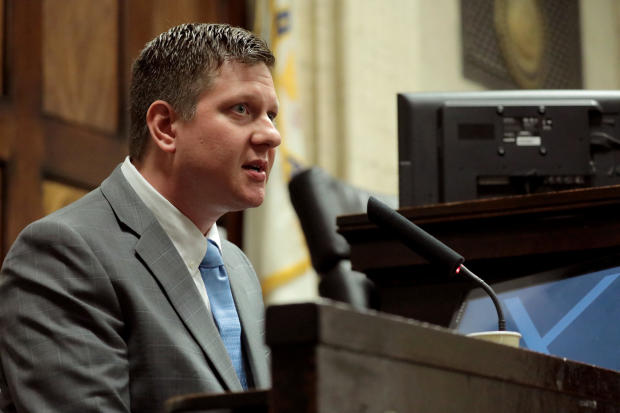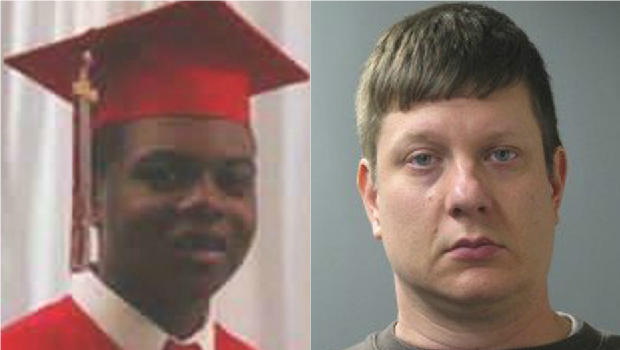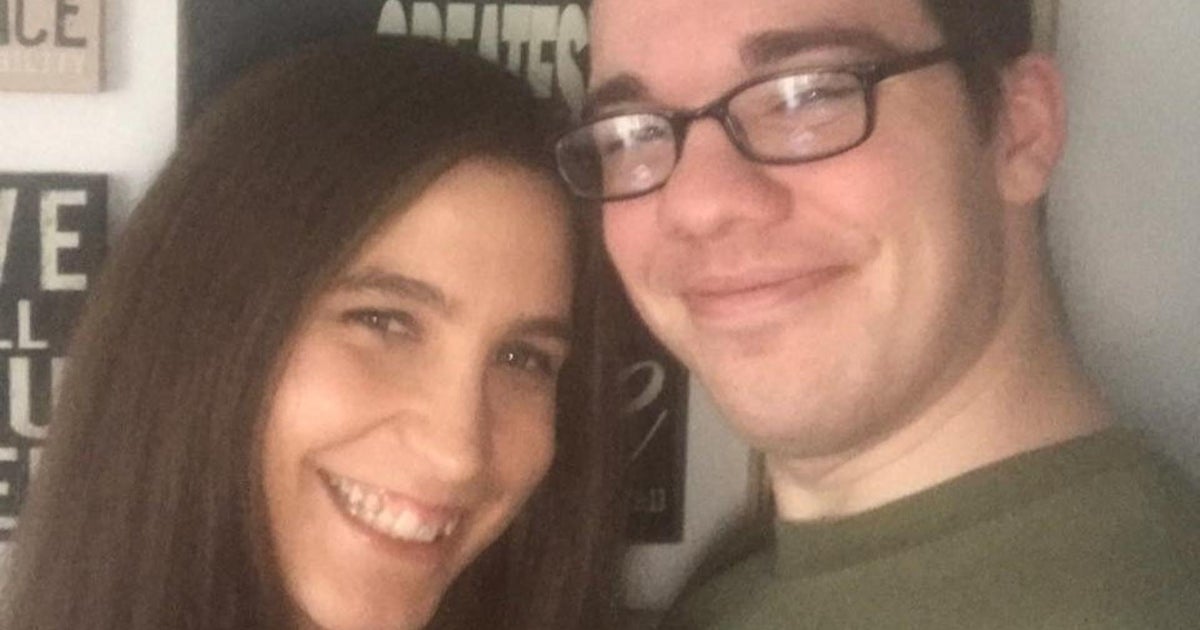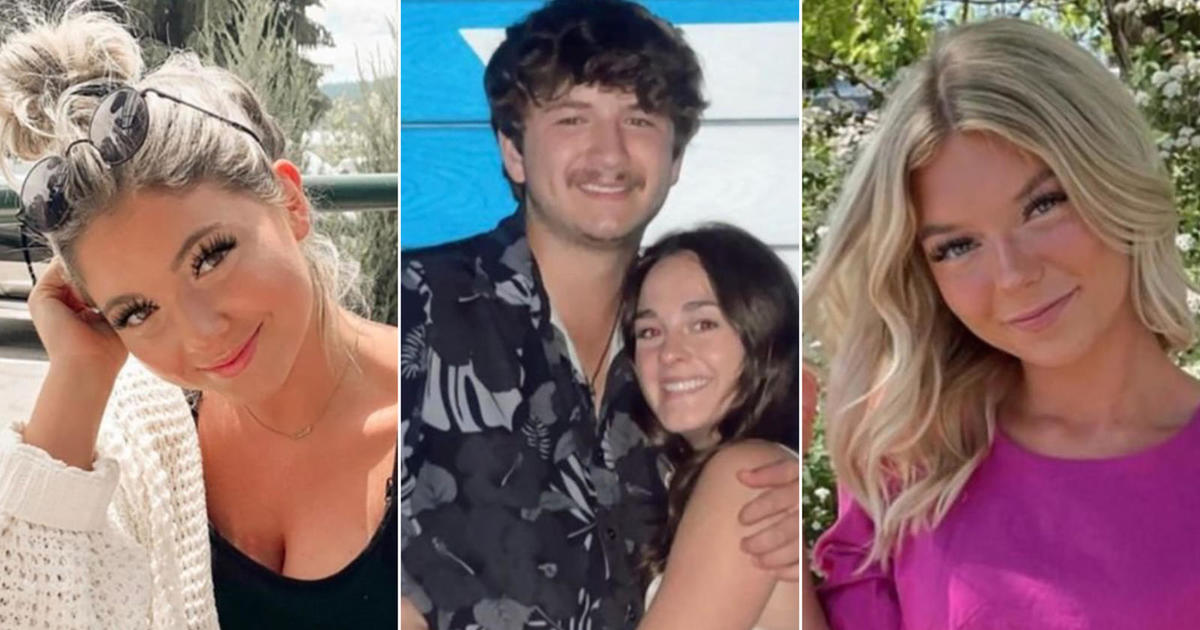Jury deliberates fate of Chicago cop Jason Van Dyke in Laquan McDonald's death
CHICAGO — Attorneys in the trial of a white Chicago police officer charged with murder in the 2014 shooting of black teenager Laquan McDonald sparred Thursday over what video of the deadly encounter actually proves. The jury in the murder trial of Officer Jason Van Dyke then began deliberating early Thursday afternoon.
During closing arguments, prosecutor Jody Gleason pointed to video of Van Dyke shooting McDonald 16 times as the teenager held a knife in his right hand. She noted that Van Dyke told detectives that McDonald raised the knife, that Van Dyke backpedaled, and that McDonald tried to get up off the ground after being shot.
Gleason said, "None of that happened. You've seen it on video. He made it up."
Van Dyke's attorneys say he was afraid for his life and acted according to his training.
Defense attorney Dan Herbert told the jury that the video doesn't tell the whole story and that it's "essentially meaningless based on the testimony" jurors heard. Herbert specifically pointed to testimony from Van Dyke's partner that night, Joseph Walsh, who said he saw McDonald raise the knife, even though the video doesn't show that.
"The video is not enough," he said. He added: "It shows a perspective, but it's the wrong perspective."
Herbert did not note that Walsh is one of three officers charged with conspiring to cover up and lie about the circumstances of the Oct. 20, 2014, shooting to protect Van Dyke.
Both the defense and the prosecution wrapped up their closing arguments Thursday, and a judge gave the jury their instructions. Van Dyke is charged with first-degree murder, aggravated battery and official misconduct. The judge told jurors Thursday afternoon that they will have the option of convicting the officer of the lesser charge of second-degree murder.
First-degree murder carries a maximum sentence of life. The maximum penalty for second-degree murder is no more than 15 or 20 years.
Chicago police have started preparing for any possible violence in the aftermath of a verdict, reports CBS Chicago. The department has amped up patrols, many officers have been assigned to 12-hour shifts and supervisors have canceled days off, the station reports. Tactical officers and special operations units will be heavily armored.
Van Dyke took the stand at trial and said in sometimes emotional and sometimes defiant testimony that what he saw did not unfold the way it did on dashcam video.
Van Dyke said he yelled "drop the knife" but McDonald "never stopped" advancing and didn't drop the knife.
"His face had no expression, his eyes were just bugging out of his head. He had these huge white eyes, just staring right through me," Van Dyke said.
Appearing to choke back tears, Van Dyke said McDonald got about 10 to 15 feet away from him. He said McDonald waved the knife, and that's when he shot him. An autopsy shows McDonald had the hallucinogenic drug PCP in his system.
"His back never once turned towards me," Van Dyke said. "He could have made a decision to turn and walk in the other direction; he could have dropped the knife and ended it right there."
But prosecutors picked apart his story, asking why Van Dyke didn't step out of McDonald's path and pointing out that the video shows Van Dyke actually stepping toward McDonald.
Gleason said if Van Dyke knew killing McDonald wasn't justified and killed him anyway, that would be first-degree murder. If jurors find that Van Dyke truly believed the shooting was justified but that that belief was unreasonable, second-degree murder would apply.
Police encountered McDonald after being called to a report of someone breaking into vehicles. At one point, McDonald punctured a squad car tire with his knife. When Van Dyke arrived, police had McDonald mostly surrounded on a city street and were waiting for an officer to arrive with a Taser to use on the 17-year-old.
Gleason argued that Van Dyke arrived on the scene already with the thought he would kill McDonald. She said he didn't adjust his assessment even as he saw McDonald walk away from police with the knife at his side.
"He shot too early, he shot too often and he shot way to long," he told jurors. She added that the officer could have waited and that an officer with a Taser was just 25 seconds away.
"The defendant had million other options other than firing that gun," she said.
She said that while police officers are allowed to use deadly force in some circumstances, this was not one of them.
"They do not have the right to use deadly force just because you will not bow to their authority," she said. "This is not the Wild West out here ... where an officer can shoot an individual ... and try to justify it later."
At one point, she displayed an autopsy photo of McDonald's body, noting bullet entry and exit holes.
"Laquan's body was riddled, broken and bleeding," she said, adding that "he even had bullet fragments in his teeth."
But Herbert argued that McDonald was to blame for what happened that night, saying "the tragedy ... could have been prevented by one simple step." Herbert then dramatically took the knife that was entered into evidence earlier and dropped it on the floor in front of the jury box.
He argued prosecutors didn't prove one important element he said was required for murder: "He has no intent to kill. The intent is to stop the threat."
He also reminded jurors that a prosecutor briefly mentioned the issue of race opening, but never broached the issue again.
"Remember that in opening?" he asked. "Did you see any evidence that race had anything to do with this case? When you don't have evidence, you use argument."






